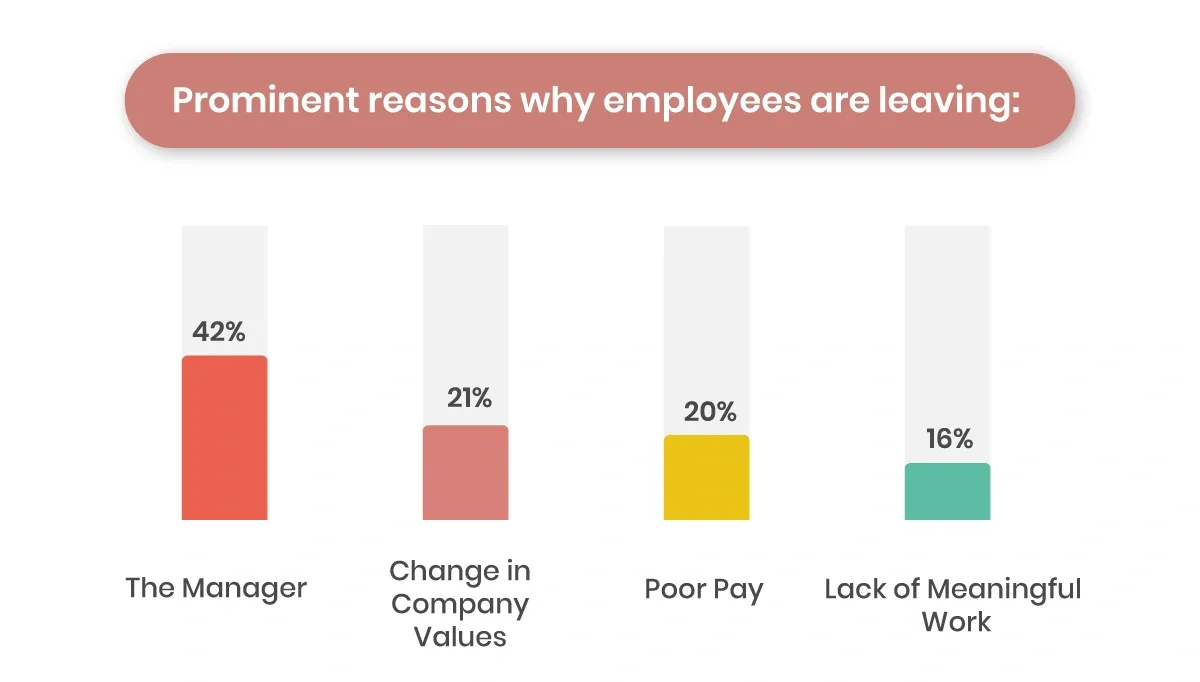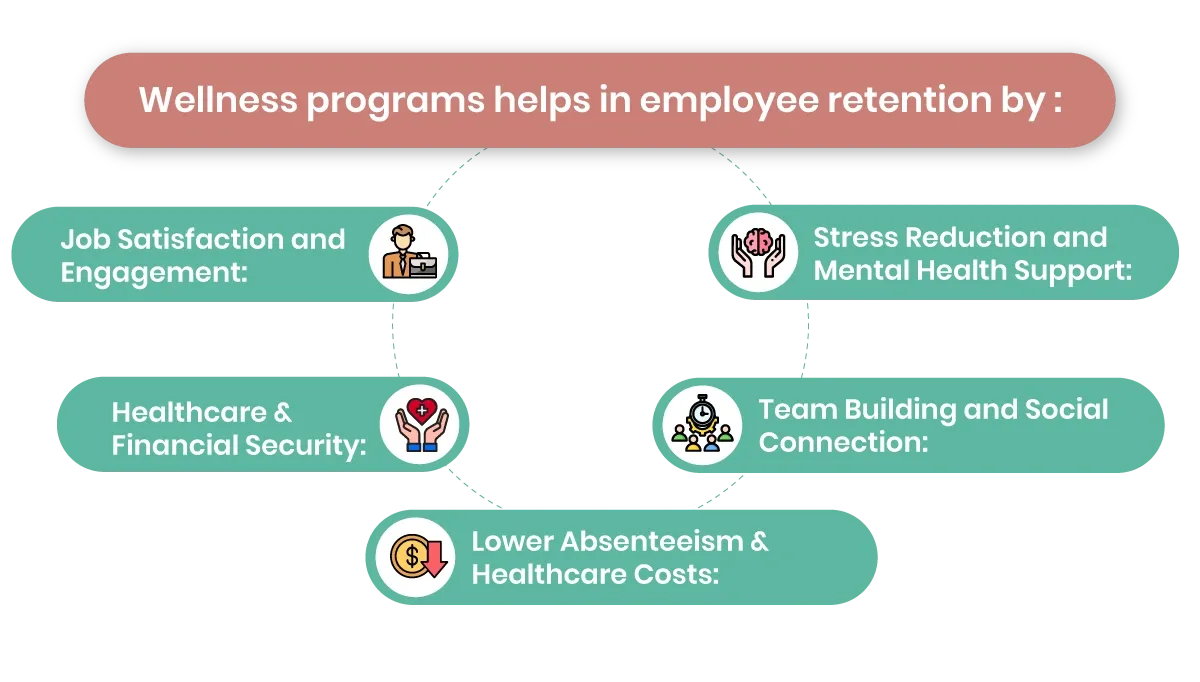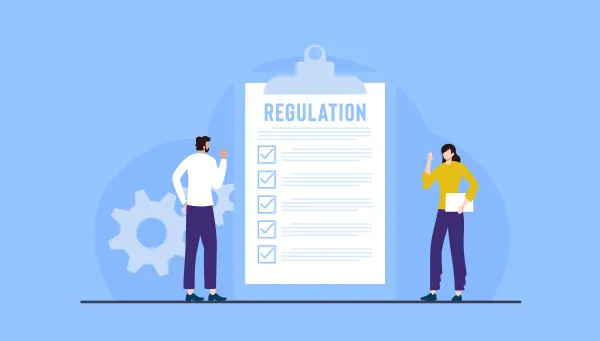The Wellness Retention Revolution: Winning Strategies for Keeping Top Talent
In today's corporate world, employee retention is much like winning on a battlefield. Success depends on innovative strategies, strong support systems, and keeping your team motivated. Just as commanders rely on the loyalty of their troops, businesses must invest in wellness programs to reduce turnover and retain top talent.
The truth is replacing an employee is pretty expensive and time consuming.
Did you know? According to American Fidelity, organizations implementing wellness initiatives experience a 25% reduction in employee turnover. Additionally, companies with highly effective wellness programs report just 9% voluntary turnover, compared to 15% for those with poorly designed programs.
The above statistic depicts a clear connection between wellness programs and employee retention.
The most effective employee wellness programs incorporate a combination of initiatives, including stress management, fitness activities, and mental health support. These initiatives help deliver the desired success metrics, which include decreased absenteeism, increased productivity, and ROI.
In short, wellness programs meet employees' overall well-being needs, making it easier for organizations to retain their workforce.
In this blog, I will reveal everything you need to know about how and why wellness programs enhance employee retention.
The Retention Challenge: Why Are Employees Leaving?

The most common reasons behind employees leaving the workplace are due to toxic work culture and micromanagement.
Here is a fictional yet realistic story that is worth reading:
When Annie, just 22, joined the digital marketing team, she immediately stood out. Her ideas drove strong engagement, making her one of the company's rare talents who could both strategize and execute. But with success came growing expectations. Despite consistently meeting her targets, she was pushed to deliver at the same high level every time. The pressure eventually led her to resign, prioritizing her well-being over her career. Her departure shocked the management, and even an offer to double her salary couldn't persuade her to stay.
This is just one example of a company struggling to retain a genuine, hardworking employee. There are innumerable cases like this on a global scale. As per a LinkedIn post, which I came across, here are some prominent reasons why employees are leaving:
- The Manager - 42%
- Change in Company Values - 21%
- Poor Pay - 20%
- Lack of Meaningful Work -16%
The financial impact of the high turnover rate is staggering. The average cost to replace an employee ranges from 50% to 200% of their annual salary. The price varies based on the role. Technical positions may cost upto 100-150% of the previous salary to replace.
Apart from the above reasons, employees are also leaving for companies that prioritize wellness. According to People Keep's 2024 Employee Benefits Survey, 92% of employees consider health benefits important. And about 80% of employees value mental health benefits.
How Do Wellness Programs Contribute To Improving Employee Retention?

Wellness programs play a significant role in employee retention in various ways. While researching this topic, I found the following:
1. Job Satisfaction and Engagement:
When employees see that the management is genuinely invested in improving their wellness, they are most likely to stay in the job. After all, it is in human nature to remain devoted to the ones who are our well-wishers.
Additionally, such employees display signs of engagement at work as they experience job satisfaction.
2. Stress Reduction and Mental Health Support:
Employers who incorporate mental and physical wellness resources into their wellness programs witness noticeable improvements in employee productivity (50%), stress (43%), morale (41%), and employee creativity and innovation (36%).
Resources in this case may include fitness challenges, discounted fitness classes, workshops, and more. Access to such resources is how employees can deal with their wellness shortcomings.
3. Healthcare & Financial Security:
According to a Wellable report, 91% of companies report lower healthcare costs as a result of implementing wellness programs.
When employees receive benefits such as health savings accounts, fitness classes, smoking cessation programs, and support for preventive care, they feel more secure. Consequently, they are less likely to seek employment elsewhere.
4. Team Building and Social Connection:
Most fitness challenges that are part of wellness programs are team-based. And even if they may be individualistic, the shared goals play a vital role. Such an initiative helps build team spirit and camaraderie, leading to employee retention.
5. Lower Absenteeism & Healthcare Costs:
Healthy employees contribute more consistently to organizational goals and incur lower healthcare expenses. After all, the ultimate goal is to have healthier employees who contribute towards a happier workplace.
Wellness programs not only enhance retention but also contribute to business sustainability.
What Are The Most Effective Corporate Well-being Programs For Retention?
1. Mental Health & Stress Management Programs

Here are some proven approaches:
-
Employee Assistance Programs (EAPs): Includes confidential counseling, therapy sessions, and crisis support.
-
Mindfulness & Stress Workshops: Includes meditation, yoga, and resilience training.
-
Mental Health Day Offs: Involves additional paid leave specifically for mental well-being.
Why it works: Employees are less likely to leave when they feel emotionally supported and not burned out.
2. Flexible Work & Work-Life Balance Initiatives
Here are some proven approaches:
-
Hybrid/remote work options.
-
Flexible working hours.
-
Paid time-off policies that encourage real rest and reset.
Why it works: Flexibility is one of the top reasons employees choose to stay or leave an employer.
3. Physical Wellness Programs

Here are some proven approaches:
-
On-site or virtual fitness classes.
-
Step challenges or gamified activity tracking, such as what Vantage Fit offers.
-
Health screenings, nutrition counseling, and subsidized gym memberships.
Why it works: Helps build a healthier, more energetic workforce and reduces absenteeism.
4. Financial Wellness Programs
Here are some proven approaches:
-
Workshops on budgeting, saving, and retirement planning.
-
Loan repayment support.
-
Access to financial advisors.
-
Access to health insurance.
Why it works: Financial stress is one of the primary reasons behind employee disengagement and high turnover rates.
5. Professional Growth & Career Well-being
Here are some proven approaches:
-
Learning & development stipends.
-
Career coaching or mentorship programs.
-
Clear growth pathways within the organization.
Why it works: Employees who see a future with the company stay longer.
6. Social Well-being & Community Building

Here are some proven approaches:
-
Team-building retreats and activities.
-
Volunteering and CSR opportunities.
-
Employee Resource Groups (ERGs) for Inclusivity.
Why it works: Strong social bonds at work foster a sense of belonging and loyalty.
7. Recognition & Rewards for Well-being
Here are some proven approaches:
-
Incentives for healthy behaviors (e.g., wellness points redeemable for perks).
-
Celebrate employee achievements beyond work (personal milestones, wellness community impact).
Why it works: Employees feel seen and appreciated, boosting morale and retention.
Suggested reading: All You Need to Know About Corporate Wellness Programs
How to Create a Wellness Program That Keeps Employees?
A true wellness program isn't just a checkbox but a retention driver. Here's a step-by-step framework you can use to create a program from scratch:
1. Start with Listening, Not Guessing
-
Conduct pulse surveys and establish focus groups to gain a deeper understanding of what employees truly want.
-
Segment by age, life stage, and role. Segmentation is crucial, as the needs of a 25-year-old employee may differ from those of a 40-year-old.
-
Use data (such as absenteeism, turnover reasons, and benefits usage) to highlight the gaps.
Wellness programs fail when they're designed around assumptions rather than real needs.
2. Make It Holistic, Not Just Physical
A retention-driven wellness program should cover all the dimensions of wellness:
-
Physical: Fitness challenges, nutrition, and screenings.
-
Mental: Counseling, mindfulness, stress management.
-
Social: Team activities, volunteering, ERGs.
-
Financial: Debt management, retirement planning.
-
Career: Learning & growth opportunities.
Employees are more likely to stay in an organization where they feel supported in all aspects of their lives.
3. Build Flexibility and Choice
-
Offer a menu of wellness benefits rather than a one-size-fits-all.
-
Include remote-friendly options (virtual fitness classes, teletherapy).
-
Allow flexible work arrangements to reduce burnout.
Personalization increases employee engagement and prevents fatigue even from wellness initiatives.
4. Integrate with Company Culture
-
Leadership should actively participate (not just endorse).
-
Connect the concept of wellness to company values.
-
Encourage managers to showcase healthy behaviors (taking breaks, using leave when needed).
Culture alignment makes the approach of employee wellness authentic.
5. Incentivize and Recognize Participation
-
Gamify wellness with points, challenges, and rewards.
-
Recognize employees who consistently engage (without shaming those who don't).
-
Offer meaningful rewards, such as extra time off, gift cards, or wellness stipends.
Recognition makes employees feel valued, boosting morale and loyalty.
6. Keep It Measurable and Adaptive
-
Track participation rates, engagement levels, and the impact on retention.
-
Collect feedback quarterly and evolve programs accordingly.
-
Use digital wellness platforms for real-time insights.
7. Communicate, Communicate, Communicate
-
Use clear, consistent, and fun messaging to promote wellness initiatives.
-
Highlight success stories and testimonials from employees.
-
Make resources easy to find (make use of internal portals or introduce a wellness app like Vantage Fit).
-
Even the best wellness program won't be effective if employees are unaware of it.
Suggested reading: Implementing a Wellness Program at Work: Steps, Benefits, and Examples
Final thoughts
When the intention behind a wellness program is genuine and resonates with employees, retention is inevitable. A well-designed wellness program is no longer only about boosting health. It's about building a workplace where employees feel supported, valued, and motivated to stay.
When crafted right, a wellness program can become a powerful retention tool that drives both engagement and loyalty. Ready to create a wellness program that your employees will love and stick with?
Discover how Vantage Fit makes it easy to design, manage, and measure impactful employee well-being initiatives.
Frequently Asked Questions
1. How Do Wellness Programs With Gamification Improve Employee Retention?
Gamification makes wellness initiatives engaging and fun. It is such an element that motivates employees to stay consistent and connected, helping them achieve their wellness goals. Furthermore, gamification enhances satisfaction and reduces turnover.
2. What Are Some Wellness Program Incentives To Improve Employee Retention?
Effective wellness incentives include gift cards, stipends, extra time off, recognition awards, and extra health benefits.
3. What Is The ROI Of A Wellness Program?
ROI (Return on Investment) refers to the financial return on investment in wellness programs. It helps indicate profit or loss and productivity gains after investing in wellness programs.
4. What Are the Top Employee Wellness Software?
Here are some growing employee wellness apps or software worth mentioning:
- Vantage Fit
- Wellable
- Virgin Pulse
- Woliba
- HealthifyMe
- LimeAde
- YuMuuv
- Headspace for work



